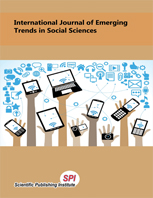Cyber Crime Fraud in Jakarta and Tangerang
DOI:
https://doi.org/10.55217/103.v13i2.563Keywords:
Cyber hardware, Cyber security, Fraud, Information systems.Abstract
The purpose of this study is to determine Cyber Security, Cyber Hardware, Information Systems against Fraud. The population of this study are users of information technology in Jakarta and Tangerang. This research method is a qualitative method and the type of primary data by collecting questionnaires. Types of primary data are data taken directly from the object of research, using a questionnaire with a total of 103 respondents. While secondary data is data obtained from documents from banks and other sources related to this research. The sampling technique is the analysis of the outer model (measurement model) and analysis of the inner model (structural model) using the Multivariate Structural Equation Model (SEM) Partial least square or commonly abbreviated as PLS is a type of statistical analysis whose use is similar to SEM in covariance analysis. Because it is similar to SEM, the basic framework in PLS used is based on linear regression. So, what is in linear regression, is also in PLS. It's just that it is given a different symbol, symbol or term. In participatory technique, the results of this study show that cybersecurity, cyber hardware has a positive effect on fraud. The performance of this research shows that Cyber security and cyber-Hardware have an effect on Fraud, so that users or users are more careful in using information technology and always update it. Simultaneously, the R-Square value is 0.257 or 25%, which means cyber security, cyber hardware influenced by the information system against fraud by 25%.


